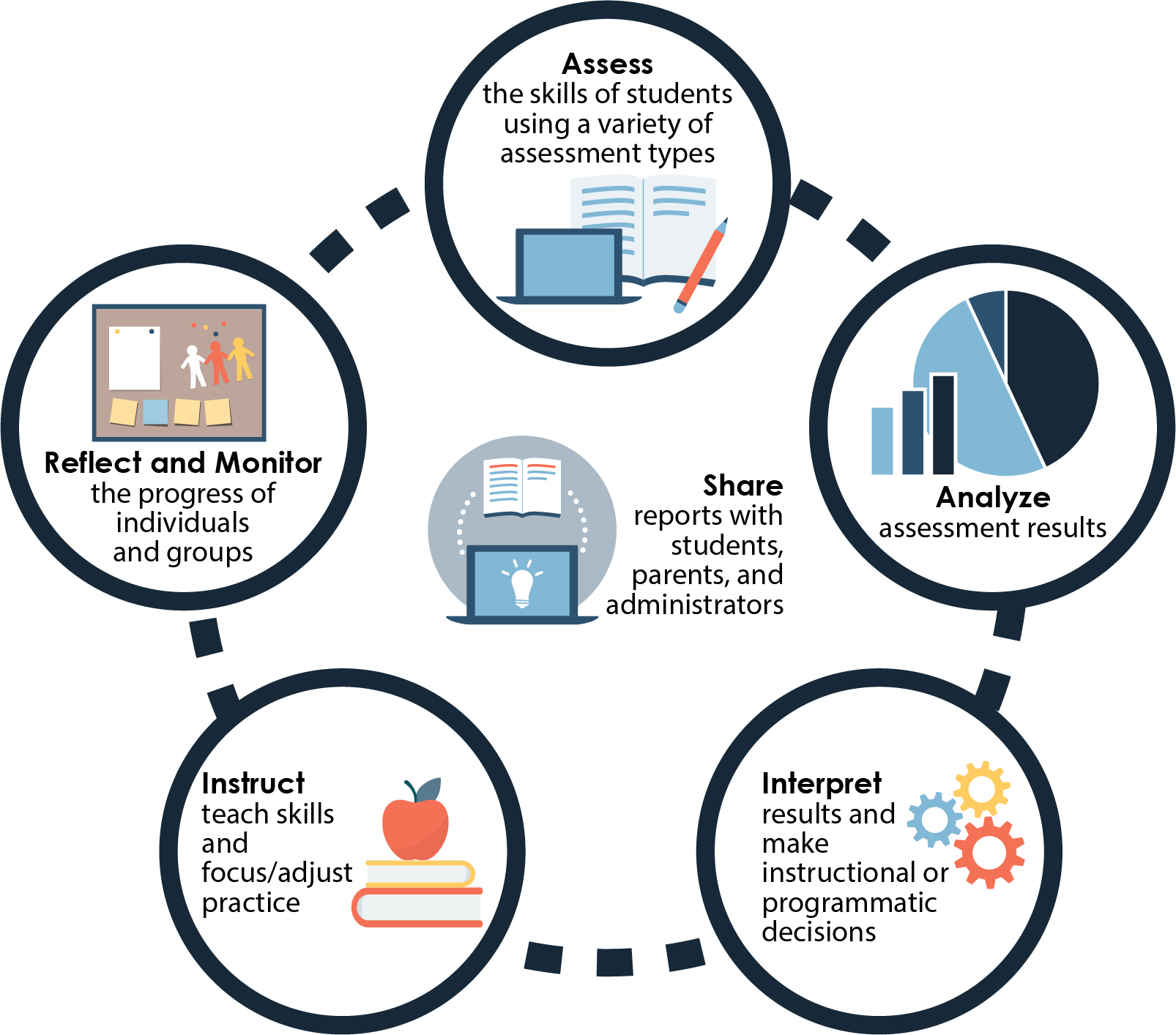Focus On Effective Instruction
The 2020–21 school year presents a unique set of opportunities and challenges due to the disruption to instruction in spring 2020, as well as the uncertainty associated with what the "return to school" will look like. Educators know that every school year there are students who require support in addressing unfinished learning from prior grades; a challenge that will be felt more prominently in the 2020–21 school year. It is vitally important that educators are supported in making deliberate instructional and assessment choices within a comprehensive system that allow all students to effectively engage with grade-level work.
Instruction must be aligned to a coherent set of learning outcomes, indicating what students should know and be able to do. Dimensions for consideration when planning for instruction include the following.
-
Instructional Delivery:
Instructional delivery is differentiated relative to explicitness through modeling, systematic instruction with appropriate scaffolding and pacing, and provision of immediate corrective feedback to students with sufficient opportunities to respond.
-
Grouping:
Grouping includes whole group, homogeneous small group, partners, heterogeneous mixed ability small group, independent and one-to-one.
-
Time: The amount of instructional
time varies relative to a particular area of content, small group instruction versus whole group instruction, and opportunities for students to interact or work independently.
-
Materials: Selecting materials for specific students and purposes is often a challenge. Materials should be evidence-based and adjusted to meet the needs of students.
-
Learning Environment: A positive and safe
learning environment has clearly defined and consistent expectations.
Differentiated instruction is key to enhancing students' ability to learn. Teachers must have the content knowledge and knowledge of students (students' needs, interests, cultures, and experiential backgrounds) that enable them to plan instruction. Differentiation is one critical active response to meet the various needs of the students in the classroom.
The most effective and equitable way to support students in their learning is to ensure the majority of time is spent engaging with grade-level content, remediating with precision and only as necessary. It is entirely possible to hold high expectations for all students while addressing unfinished learning in the context of grade-level work. Since time is a scarce commodity in classrooms — made more limited by anticipated closures and remote or blended learning models in the fall of 2020 — strategic instructional choices about which content to prioritize must be made, supported by key PA Academic Standards. Note that while all standards deserve a defined level of instruction, neglecting key concepts may result in learning gaps in student skill and understanding and may leave students unprepared for the challenges of a later grade.

Assess: Schools should have a well-articulated plan that describes the assessment tools that will be used at various grade levels across the local education agency(LEA). Various assessment tools (progress monitoring, benchmark), results of observations, or other formative data can be used on a regular basis to make important decisions about classroom instruction, grouping, and materials. Recommendations may be made to administer additional assessments, perhaps to specific students (e.g., students who may be struggling). Other data may also be used during this cycle, as a means of taking a broader look at why students may be successful or having difficulties; for example, as mentioned by Bernhardt (2014), data about student demographics, classroom processes, perceptions, as well as student outcome data can provide important information.
Access the Pennsylvania Classroom Diagnostic Tools (CDT).
Access the SAS Assessment Builder.
Analyze: Analyzing data requires that it be organized in ways that make it easy to understand and interpret. Schools can identify specific professionals (e.g., data analysts, literacy coaches, psychologists) to put the data into charts or graphs, perhaps by grade level. Such organization is important as it allows teachers reviewing this data to interpret it easily and effectively. During this analysis phase, assessment results can be examined to look for patterns and trends.
Access PDE's Assessment Data Protocol Process. (Word)
Interpret: The information gained from interpretation is used to inform instruction. Generally, this interpretation is made by teachers who can identify areas of strength and academic need. Teachers may also present other data (from classroom observations or informal measures) that can be used to validate current results and conclusions. They can make plans about how to use those results to plan instruction. They may also consider the need for additional assessments for specific students, including careful observations in the classroom or additional formative assessments. Interpretation generally occurs during a data team.
Access the sample Remote Learning Rubrics for LEA leaders. (Word)
Access an annotated guide to PDE Resources.
Instruct: During this part of the cycle, teachers apply the interpretation to their instruction. They may make changes in instructional strategies, materials, and so forth. Students may be reassigned to other teachers or groups. Regardless, what is important is for teachers to implement the plan that they decided on during the data team meeting.
Access the high-level focus documents for English Language Arts.
Access the high-level focus documents for Mathematics.
Access the high-level focus documents for Science and Technology.
Access other high-level focus documents for Academic Standards.
Reflect and Monitor: As teachers are instructing, they should be thinking about how the changes in instructional or grouping practices have affected students. Have they had a positive effect? No effect? Negative effect? In other words, they must monitor their own instructional practices and observe students’ reactions and responses to them. During this period, they can take notes so that they can share their reflections at the next data team meeting. They can also think about what additional assessments may be necessary to help them plan and teach more effectively.
Access researched evidence briefs from the Annenberg Institute at Brown University. Briefs currently available include:
Access the PDE Staff and Student Wellness Guide.